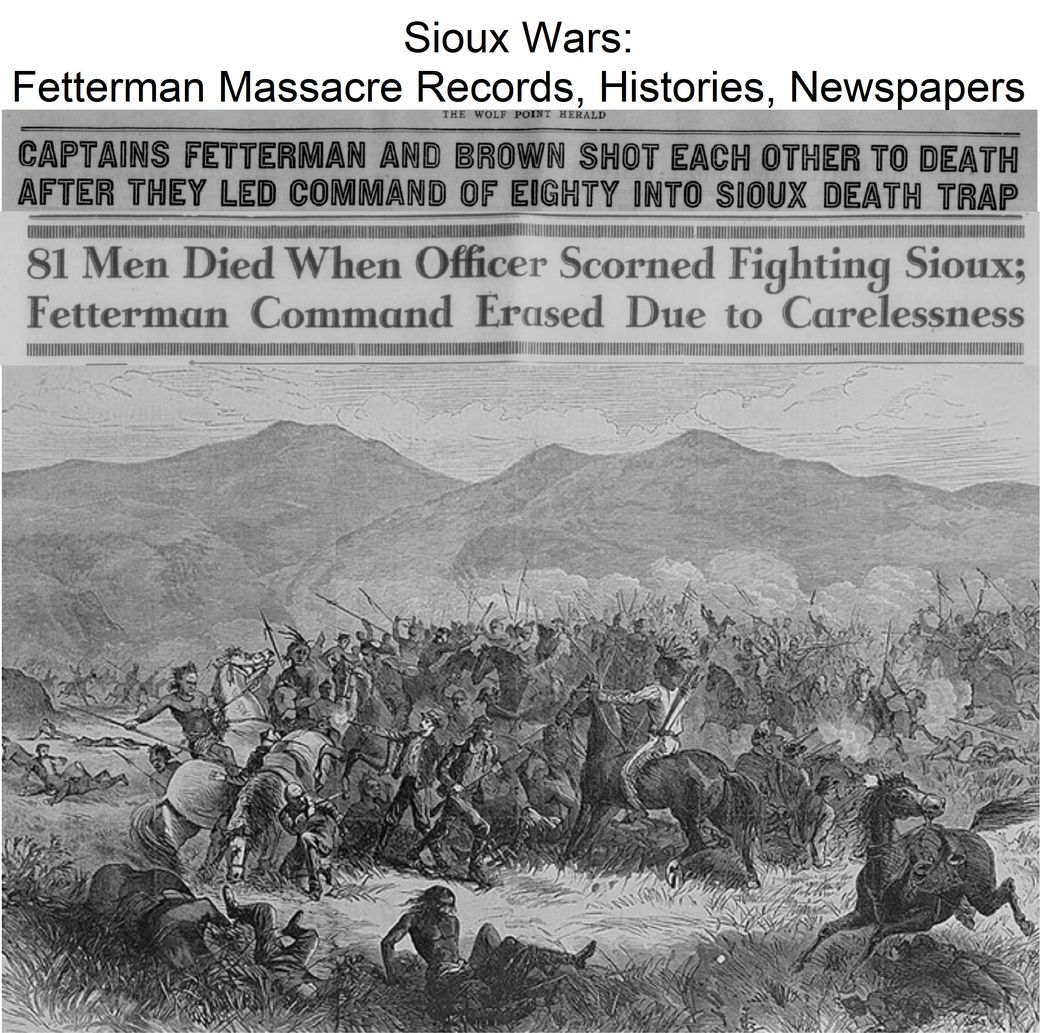
Description
Fetterman Massacre and Red Cloud’s War: A Timeline
Pre-1851:
- Native American Hegemony on the Northern Plains: Lakota Sioux, Northern Cheyenne, and Northern Arapaho bands maintain control and influence in the region.
1851:
- Treaty of Fort Laramie (1851): An agreement is made, the specifics of which become a point of contention and a precursor to later conflicts.
1860s (Mid-):
- US Government Westward Expansion Efforts Intensify: Following the Civil War, the US government renews its efforts to expand westward, particularly on the Northern Plains. These efforts are met with Native American resistance.
- Red Cloud Emerges as a Leader: Red Cloud begins to coordinate Native American actions, transcending tribal boundaries, in an effort to maintain their hegemony in the region.
1866:
- July 24, 1866: Miscellaneous unbound records relating to the Fetterman Massacre investigation begin, indicating ongoing tensions and military presence.
- December 21, 1866: The Fetterman Massacre (also known as the Fetterman Fight, Battle of the Hundred-in-the-Hands, or Battle of a Hundred Slain) at Fort Phil Kearny, Wyoming (then Dakota Territory):A wood train from Fort Phil Kearny comes under attack by a small band of Sioux Indians.
- Captain William J. Fetterman is dispatched from Fort Philip Kearney with a detachment of 81 men to relieve the wood train and pursue the attacking Indians.
- Fetterman’s detachment is lured into an ambush by approximately 1,000 Lakota, Cheyenne, and Arapaho warriors.
- The entire US Army command of 81 men is killed. This marks the worst military defeat suffered by the US Army in action with American Indians on the Great Plains until the Battle of the Little Bighorn a decade later.
- Newspaper coverage of the event begins immediately, with the New York Tribune and Evening Star among those reporting.
1867:
- February 18, 1867: President Andrew Johnson appoints a special commission of military officers and civilians to investigate the Fetterman Massacre, determine its causes, and propose steps to avoid full-scale war.
- March 4, 1867: The special commission holds its first meeting and begins taking testimony.
- March 4 – June 12, 1867: Minutes of meetings of the Special Commission are recorded.
- Early May 1867: The commission gradually moves westward, visiting Fort McPherson and Fort Sedgwick, before arriving at Fort Laramie.
- At Fort Laramie, May 1867: The commission separates into three sections:
- One group visits the Upper Missouri area to assess Indian disposition toward white men.
- Judge Kinney goes to Fort Philip Kearney to gather details about the massacre and speak with Crow Indians.
- The third group remains at Fort Laramie to confer with Sioux bands.
- May 10 – June 4, 1867: Proceedings of Commissioner J.F. Kinney take place at Fort Phil Kearny.
- May 21 – July 31, 1867: Proceedings of Commissioners Alfred Sully and Ely S. Parker take place, likely focused on their assigned tasks (Upper Missouri and Fort Laramie).
- June 14, 1867: Miscellaneous unbound records relating to the Fetterman Massacre investigation conclude.
- September 6, 1867: Commissioners Alfred Sully and Ely S. Parker submit their report.
- October 7, 1867: Commissioner J.F. Kinney submits his report.
1866-1868: Red Cloud’s War (Concurrent with Investigation and Aftermath of Fetterman Massacre):
- Red Cloud successfully orchestrates a campaign to close the Bozeman Trail. This war is considered the only substantive operational and strategic victory of Native Americans against Westward Expansion.
1868:
- Fort Laramie Treaty of 1868: Red Cloud’s War ends with the signing of this treaty, in which the US government acquiesces to Native American demands. This treaty outlines “unceded Indian territory.”
1869:
- “Absaraka, Home of the Crows” published by Margaret Irvin Carrington: Provides a historical account from the perspective of the first wife of Fort Phil Kearny’s commander.
1872:
- May 27, 28, and 29, 1872: Councils are held with Red Cloud’s Band of Oglala Sioux, documented in a report by the Office of the Secretary of the Interior.
1876:
- Sitting Bull Rises to Prominence: Sitting Bull directs efforts against new encroachments into the unceded Indian territory outlined in the 1868 Fort Laramie Treaty.
- Battle of the Little Bighorn: Sitting Bull leads Native American forces to a string of tactical victories, culminating in this battle, which becomes another significant defeat for the US Army.
Mid-1877:
- End of the Great Sioux War: The US Army defeats Lakota resistance on the Northern Plains.
1910:
- “My Army Life and the Fort Phil Kearney Massacre with an Account of the Celebration of Wyoming Opened” published by Frances C. Carrington: Offers a personal account from the perspective of an army wife who experienced the events firsthand and later married the fort commander.
1947 (Pre):
- Office of Indian Affairs (later Bureau of Indian Affairs): Until 1947, Indian affairs were primarily administered by the Office of Indian Affairs.
1950:
- “Absaraka, Home of the Crows” edited by Milo Milton Quaife (republished): A new edition of Margaret Irvin Carrington’s work.
1989:
- NPS National Register of Historic Places Continuation Sheet – Historic Resources of the Bozeman Trail in Wyoming: Documenting historical resources related to the trail.
2006:
- “Atlas of the Sioux Wars” published: A geographical and historical resource on the Sioux Wars.
2011:
- “Red Cloud’s War: An Insurgency Case Study for Modern Times” published by Lieutenant Colonel Michael G. Miller: A modern military analysis of Red Cloud’s War and its relevance to contemporary conflicts like Afghanistan.
2012:
- “Military Sites in Wyoming 1700-1920, Historic Context” published: A historical overview of military sites in Wyoming.
2015:
- “The Northern Cheyenne Exodus: A Reappraisal of the Army’s Response” published: A re-evaluation of a later related conflict.
2016:
- “Red Cloud’s War: A Failure to Effectively Coordinate the Instruments of National Power” by Grant A. Brown (Master’s Thesis): An academic analysis of the US government’s strategic failures during Red Cloud’s War.
2019:
- “Hoka Hey! The Unattainable End State and the Limits of Operational Art” by Major Daniel J. Tabacchi (Master’s Thesis): An analysis of Native American operational art during the Sioux Wars, contrasting Red Cloud’s success with Sitting Bull’s limitations.
Ongoing (December 21, 1866 – August 16, 1941):
- Newspaper Coverage: Various newspapers across the US continue to publish content related to the Fetterman Massacre and broader Sioux Wars.
Cast of Characters
- Captain William J. Fetterman: A US Army officer stationed at Fort Phil Kearny, Wyoming (then Dakota Territory). He led the detachment of 81 men that was ambushed and killed in the Fetterman Massacre on December 21, 1866. His pursuit of a small band of Sioux Indians led his command into a much larger ambush.
- President Andrew Johnson: The US President who, on February 18, 1867, appointed a special commission of military officers and civilians to investigate the Fetterman Massacre and determine steps to avoid a full-scale war.
- Colonel H.B. Carrington (Henry B. Carrington): Commander of Fort Phil Kearny at the time of the Fetterman Massacre. His testimony was taken by the special commission investigating the massacre. He later married Frances C. Grummond.
- Judge J.F. Kinney: One of the commissioners appointed by President Johnson to investigate the Fetterman Massacre. He traveled to Fort Philip Kearney to gather details about the massacre and communicate with Crow Indians. He submitted a report on October 7, 1867.
- Alfred Sully: One of the commissioners appointed by President Johnson to investigate the Fetterman Massacre. He participated in proceedings from May 21 to July 31, 1867, and co-authored a report submitted on September 6, 1867.
- Ely S. Parker: One of the commissioners appointed by President Johnson to investigate the Fetterman Massacre. He participated in proceedings from May 21 to July 31, 1867, and co-authored a report submitted on September 6, 1867. Parker was a Seneca attorney, engineer, and tribal diplomat, and a brigadier general during the American Civil War.
- Lt. George Washington Grummond: A US Army lieutenant who traveled to Fort Phil Kearny in 1866 and was killed in the Fetterman Massacre on December 21, 1866. He was the first husband of Frances C. Carrington.
- Frances C. Carrington (née Grummond): An army wife who accompanied her first husband, Lt. George Washington Grummond, to Fort Phil Kearny in 1866. She witnessed events related to the Fetterman Massacre and later married Colonel Henry B. Carrington, the fort commander. She authored “My Army Life and the Fort Phil Kearney Massacre” (1910), offering her perspective as an army wife.
- Margaret Irvin Carrington: The first wife of Fort Phil Kearny’s commander, Colonel Henry B. Carrington. She authored “Absaraka, Home of the Crows” (1869), providing a historical account of the region and events.
- Red Cloud: A prominent leader of the Oglala Lakota Sioux. He transcended tribal boundaries to coordinate Native American resistance against US westward expansion. He successfully orchestrated the campaign that closed the Bozeman Trail, leading to the Fort Laramie Treaty of 1868, which is considered a significant Native American victory.
- Sitting Bull: A Hunkpapa Lakota leader who rose to prominence after Red Cloud, directing efforts against new encroachments into Native American territory following the 1868 treaty. He achieved tactical victories, notably at the Battle of the Little Bighorn in 1876, though these did not lead to long-term strategic success against the US Army.
- Lieutenant Colonel Michael G. Miller: Author of “Red Cloud’s War: An Insurgency Case Study for Modern Times” (2011), a study analyzing the Fetterman Massacre and Red Cloud’s War in the context of modern counterinsurgency.
- Grant A. Brown: Author of the master’s thesis “Red Cloud’s War: A Failure to Effectively Coordinate the Instruments of National Power” (2016), examining the US government’s strategic approach during the war.
- Major Daniel J. Tabacchi: Author of the master’s thesis “Hoka Hey! The Unattainable End State and the Limits of Operational Art” (2019), which analyzes Native American operational art during Red Cloud’s War and the Great Sioux War.
- Milo Milton Quaife: Editor of the 1950 edition of Margaret Irvin Carrington’s “Absaraka, Home of the Crows.”
Sioux Wars: Fetterman Massacre Records, Histories, Newspapers
3,082 pages of records, histories, and newspaper articles covering the Fetterman Massacre of December 21, 1866.
The Fetterman Massacre is also referred to as the Fetterman Fight, Battle of the Hundred-in-the-Hands, or the Battle of a Hundred Slain. It was the worst military defeat suffered by the US Army in action with American Indians on the Great Plains until the Battle of the Little Bighorn 10 years later.
On December 21, 1866, a battle took place between a group of approximately 1,000 Lakota, Cheyenne, and Arapaho and 81 members of the United States Army based out of Fort Phil Kearny, Wyoming. Captain William J. Fetterman had been sent from Fort Philip Kearney, Dakota Territory, to relieve a wood train that was under attack by a small band of Sioux Indians. While in pursuit of the escaping Indians, Capt. Fetterman’s detachment was attacked by numerous Indians lying in ambush, and the entire command of 81 men were killed.
On February 18, 1867, President Andrew Johnson appointed a special commission of military officers and civilians to investigate the circumstances of the massacre and to determine the necessary steps to avoid a full-scale war with the Sioux Indians. The commission met on March 4 and began taking testimony. From Omaha the commission gradually moved westward and visited Fort McPherson and Fort Sedgwick before arriving at Fort Laramie in early May. There the commission decided to separate into three sections: one group visited the Upper Missouri area to determine the disposition of the Indians in that vicinity toward the white man; Judge Kinney went to Fort Philip Kearney to talk with the Crow Indians and to learn more details about the massacre; and the third group remained at Fort Laramie to confer with Sioux bands in that region.
Source: National Archives and Records Administration
The collection includes:
Records Relating to the Investigation of the Fort Philip Kearney (or Fetterman) Massacre, 1866-1867
1,189 pages of records initially transmitted to the Bureau of Indian Affairs by a special commission appointed to investigate the causes of and the events relating to the Fort Philip [Phil.] Kearney (or Fetterman) Massacre of December 21, 1866. The Bureau of Indian Affairs, usually known as the Office of Indian Affairs until 1947, was established within the War Department in 1824. From 1789 to 1824 Indian affairs were administered in the Office of the Secretary of War. In 1849 the Office of Indian Affairs was transferred to the Department of the Interior.
Most of the records are copies of documents relating to activities of the commission appointed by President Andrew Johnson. Included are transcripts of testimony taken from officers and civilians who were present at Fort Philip Kearney at the time of the massacre, council proceedings with Indian leaders, and minutes; reports; letters received by the Commissioners; and other records transmitted to the Bureau of Indian Affairs by the Commissioners.
Records include:
Minutes of Meetings of the Special Commission, Mar. 4-June 12, 1867
Testimony of Col. H.B. Carrington
Exhibits A-F
Testimony of Soldiers and Civilians
Proceedings of Commissioner J.F. Kinney, May 10-June 4, 1867
Report by Commissioner J.F. Kinney, Oct. 7, 1867
Proceedings of Commissioners Alfred Sully and Ely S. Parker, May 21-July 31, 1867
Report by Commissioners Alfred Sully and Ely S. Parker, Sept. 6, 1867
Miscellaneous Unbound Records, July 24, 1866-June 14, 1867
Report of Councils held with Red Cloud’s Band of Ogallala Sioux May 27, 28, and 29th, 1872.
A 35-page, 1872, report by the Office of the Secretary of the Interior covering the councils held with Red Cloud’s Band of Ogallala Sioux on May 27, 28, and 29th, 1872.
My Army Life and the Fort Phil Kearney Massacre with an Account of the Celebration of Wyoming Opened by Frances C. Carrington (1910)
Frances C. Carrington was the wife of Lt. George Washington Grummond. She traveled with him to Fort Phil Kearney in 1866. George was killed in the Fetterman Massacre. After the wife of Fort Phil Kearney’s commander Col. Henry B. Carrington, died, Frances married the Commander. She tells her story of an army wife on the Great Plains in the 1860’s and her views on events related to the Fetterman Massacre.
Red Cloud’s War: An Insurgency Case Study for Modern Times (2011)
A 60-page, 2011, study by Lieutenant Colonel Michael G. Miller of the United States Air Force.
Abstract: This will be a case study of the little known Fetterman Massacre of 1866. It will look the situation at the time, possible causes, key players, the massacre itself and the aftermath. Similarities to the counterinsurgency in Afghanistan will be noted where applicable throughout this paper. A case will be proposed that the Army was ill prepared for the Indian Wars of the latter 19th Century, just as they were initially ill prepared for an extended Afghanistan Insurgency Campaign. Connections are drawn showing that there were lessons learned in 1866 that are still appropriate today. Familiarity with them, along with other more recent examples, will better prepare the Army to fight counterinsurgencies in the future.
Red Cloud’s War: A Failure to Effectively Coordinate the Instruments of National Power (2016)
A 107-page monograph written as a master’s thesis by Grant A. Brown.
Abstract: The instruments of national power, as defined within the DIME model, are Diplomacy, Information, Military, and Economic. This thesis examines the United States’ use of its instruments of power with regards to Red Cloud’s War of 1866-1868. It addresses the period following the 1851 Treaty of Fort Laramie and analyzes the war years in particular. It aims to understand both how and why the US failed to effectively coordinate its national instruments against an alliance of Sioux, Northern Cheyenne, and Northern Arapaho bands, leading to an operational defeat for the United States.
Hoka Hey! The Unattainable End State and the Limits of Operational Art (2019)
A 47-page monograph written as a master’s thesis by Major Daniel J. Tabacchi at the US Army’s School of Advanced Military Studies.
Abstract: Following the Civil War, the US government renewed efforts to expand west. On the Northern Plains, its efforts met Native American resistance, most notably, from the Lakota Sioux. Two Native American leaders transcended tribal boundaries and emerged to coordinate Native American actions attempting to maintain their hegemony in the region. From 1866 to 1868 Red Cloud successfully orchestrated a campaign to close the Bozeman Trail. Red Cloud’s War ended with the signing of the Fort Laramie Treaty of 1868, with the US government acquiescing to the Native American demands. Red Cloud’s war demonstrates the only substantive operational and strategic victory of Native Americans against Westward Expansion. In 1876, Sitting Bull rose to direct efforts against a new influx of encroachment into the unceded Indian territory as outlined in the Fort Laramie Treaty of 1868. Sitting Bull delivered a string of tactical victories culminating in the Battle of the Little Bighorn but failed to link tactical success to operational and strategic objectives. By mid-1877, the US Army defeated Lakota resistance on the Northern Plains and the Great Sioux War ended. Analyzing Lakota actions during the wars illustrates the presence of effective and ineffective operational art in a culture unfamiliar with the concept and demonstrates the importance of deriving end states while accounting for strategic context.
Newspapers
122 full-sheet pages of newspapers dating from December 21, 1866, to August 16, 1941, containing content related to the Fetterman Massacre. The newspapers include: New York Tribune (New York, NY), Evening Star (Washington, DC), The Salt Lake Herald (Salt Lake City, UT), The National Tribune (Washington, DC), The New York Herald (New York, NY), The Oglala Light (Pine Ridge SD), Omaha Daily Bee (Omaha, NE), The Tomahawk (White Earth, Becker County, MN), The River Press (Fort Benton, MT), Yankton Daily Press and Dakotaian (Yankton, Dakota Territory, SD), Carbon County News (Red Lodge, MT), The Wolf Point Herald (Wolf Point, MT), Montana Oil and Mining Journal (Great Falls, MT), The Enterprise (Sheridan, Johnson County, WY), The Kevin Review (Kevin, MT), The Cheyenne Daily Leader (Cheyenne, WY), Great Falls Tribune (Great Falls, MT), Rawlins Republican (Rawlins, WY), The Circle Banner (Circle, MT), The Democratic Leader (Cheyenne, WY), Helena Weekly Herald (Helena, MT), and The Enterprise (Sheridan, Johnson County, WY)
The collection also includes:
Absaraka, Home of the Crows by Margaret Irvin Carrington (1869), edited by Milo Milton Quaife (1950) – Written by Margaret Irvin Carrington the first wife of Fort Phil Kearney’s commander Col. Henry B. Carrington.
NPS National Register of Historic Places Continuation Sheet – Historic Resources of the Bozeman Trail in Wyoming (1989)
Atlas of the Sioux Wars (2006)
Military Sites in Wyoming 1700-1920, Historic Context (2012)
The Northern Cheyenne Exodus: A Reappraisal of the Army’s Response (2015)
Related products
-
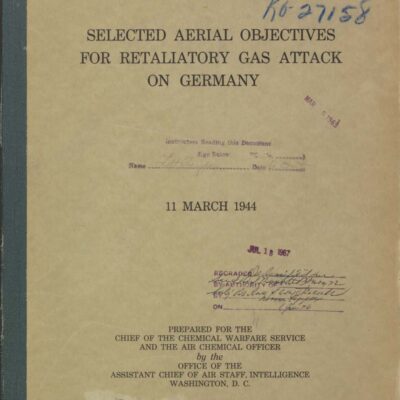

World War II: Targeted Aerial Objectives for Retaliatory Gas Attacks on Germany and Japan
$3.94 Add to Cart -
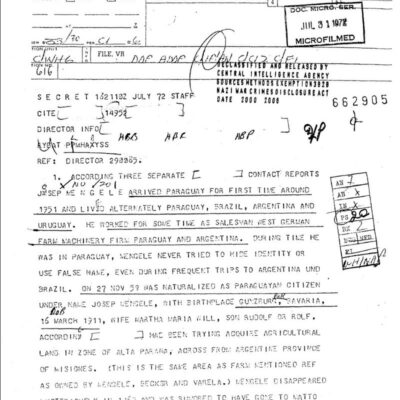
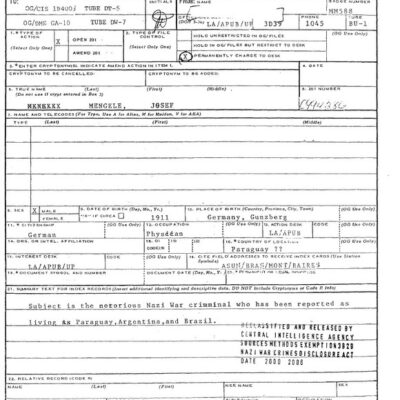
Josef Mengele CIA Files
$19.50 Add to Cart -
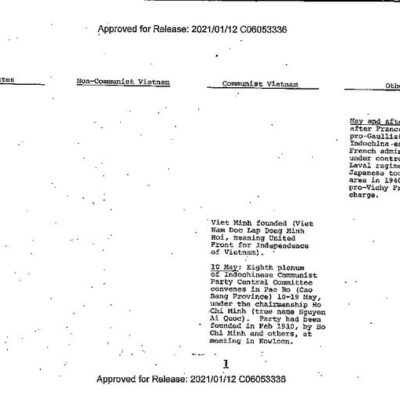
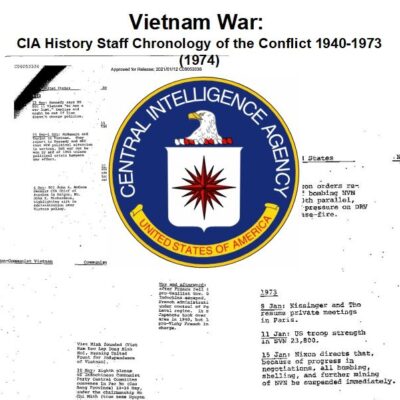
Vietnam War: CIA Chronology of the Conflict, 1940-1973 (1974)
$1.99 Add to Cart -
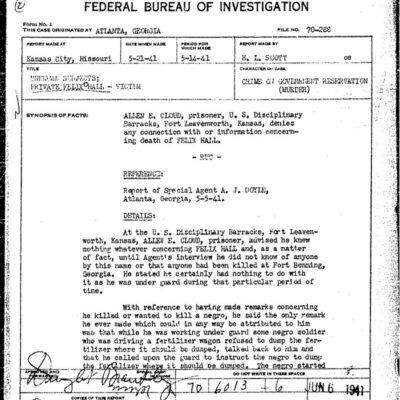
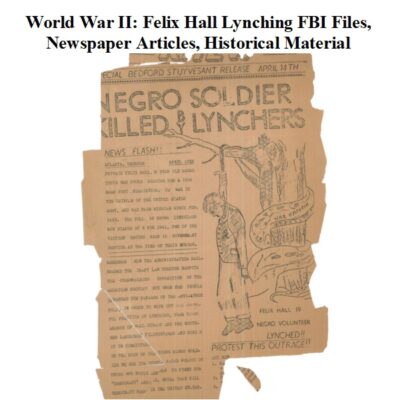
World War II: Felix Hall Lynching – FBI Files, Articles, Historical Records
$9.99 Add to Cart